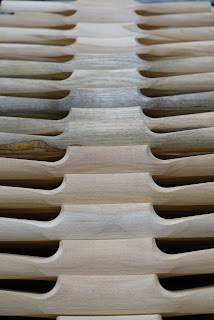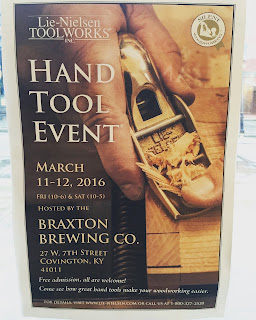As I sit here this morning thinking about all the work that needs to be done to recover from last week's storm here in South Carolina I remember back to when I had more time to volunteer to help others in times of need. I have very fond memories from June 2001 when, after my wife and I had been married for only two weeks, tropical storm Allison hit Houston, TX where we lived. It was a terrible disaster from all the flooding. We lived in a part of town that was spared, so what were we to do but jump in with both feet and start helping? We volunteered nearly every weekend for 9 months straight. We were part of a crew of great volunteers that helped repair about 800 homes in that time. It was a mammoth effort but just a small part of all the work that went on that year and the next.
Then came hurricane Katrina in '05 and all the refugees that fled to Houston for relief. Right on the heels of that came hurricane Rita that hit south east Texas. There we were, my brother and I and our wives, sleeping in tents and cutting and removing downed trees all day so that crews could come behind us to put tarps up to keep the rain out of already seriously damaged homes. The look of relief on the homeowner's faces - knowing that they weren't in it alone - was priceless. Those were some great days.
Next came hurricane Ike in '08. I had a box truck for my business that happened to have a refrigerated cab on it. I never used it for refrigeration, but it came in handy when my brother and I delivered ice, water and other perishable food to those in need. Others donated the supplies, we donated our time and fuel. It was definitely a team effort.
It was great being a part of those things and I really miss it. As I sit here knowing that there are so many that need a helping hand right now, I recall a woman that, when she saw us just a day or two after a hurricane damaged her home, she said, "I was ready to lay down and die until I saw you all coming to help." It's amazing that we can have that impact on others just by our presence. We hadn't even lifted a finger yet. Money is one thing, but being there is much more.
I am writing this because right now I seem to be out of the loop of those volunteering and I also have family responsibilities that prevent me from dropping everything to go see where I can start working and helping. I know I will catch wind of it in the coming days and I hope to see what I can do then but, for now, I want to encourage those of you that see a need and can do something to jump right in. It's probably one of the most fulfilling things you can do to express your humanity and the bonds you form with others while doing this will last a lifetime, I promise you.
In view of the situation I am going to donate 100% of my sales on some select planes that I recently completed after filling back orders. Here's the deal - you pledge to volunteer your time to help somewhere, anywhere, and, in exchange, you can purchase one of these planes for $250 (reg. $345) - all of which I will be donating. If you aren't able to give time, then please donate to an organization that helps others in need. I will leave it up to you to decide how much time or money you wish to donate - just do something! Please
visit my shop to purchase the qualifying items and help me do something too!
Thanks for reading.





























